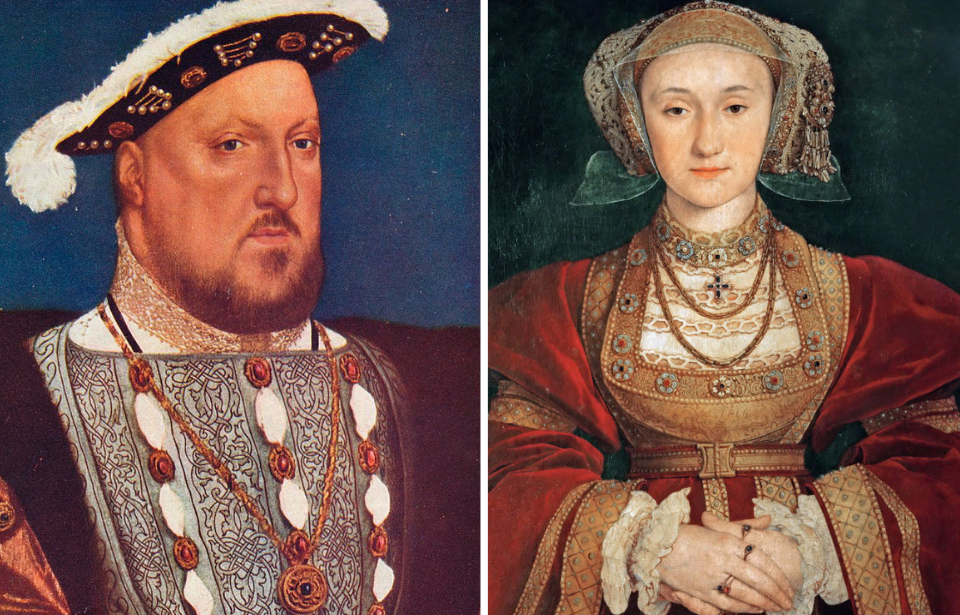Henry VIII is arguably the most famous king ever to rule England. He is known not only for breaking with the Roman Catholic Church and ushering in the Protestant Reformation but, more notoriously for being married six different times. With so many wives, it is easy to wonder if he loved one more than the others. Luckily, there seems to be a clue left in a painting done by artist Hans Holbein that may indicate who the notorious king’s favorite wife was.
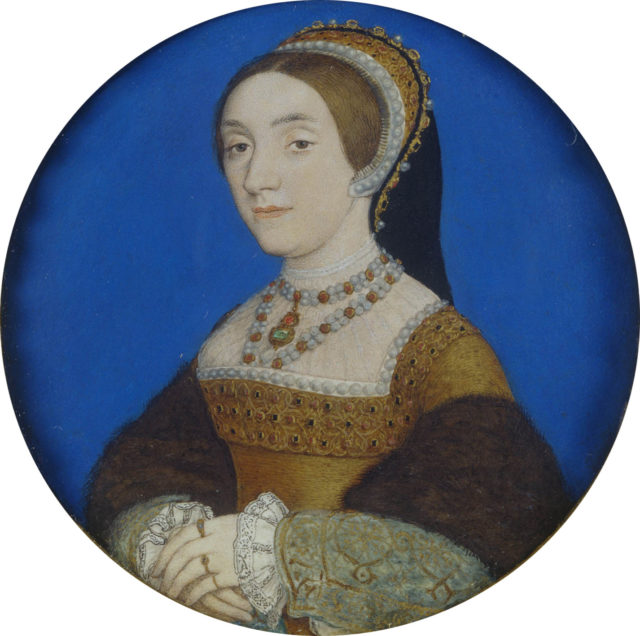
During his reign, Henry VIII hired German artist Hans Holbein the Younger to work as a court painter. Holbein is widely considered one of history’s most accomplished portraitists. His portraits not only defined but also immortalized Tudor England’s elite. As a court painter, Holbein was known for decorating his subjects and their surroundings with clues hinting at their identities.
Hans Holbein not only painted portraits of Henry VIII but also those people closest to him. In 1540, Holbein painted a miniature of an unknown woman. The miniature is held in the Royal Collection, cataloged only as “Portrait of a Lady, perhaps Catherine Howard.” Catherine Howard was Henry VIII’s fifth wife.
Historically, this miniature has been linked to Howard because it dates to 1540, when Catherine Howard married Henry VIII. The unknown woman’s jewelry also seems to be similar to the jewelry found in Catherine Howard’s inventory. The woman in the painting seems to be wearing a pendant that once belonged to Jane Seymour, Henry VIII’s third wife, so we know that Henry VIII had a habit of regifting his previous wives’ belongings to his later wives.
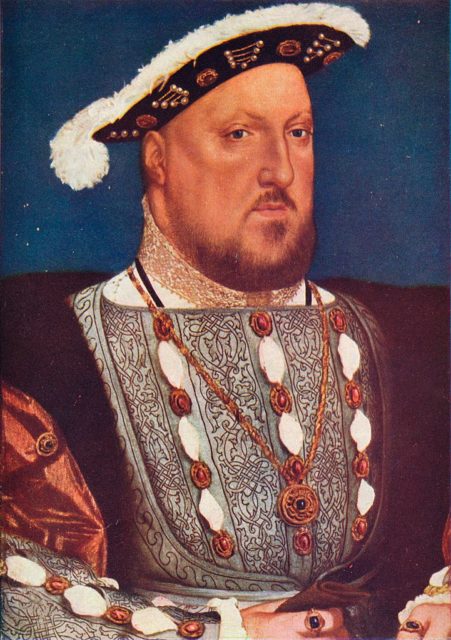
However, art historian Fanny Moyle believes she has found evidence suggesting that this unidentified woman in the miniature portrait is actually Henry VIII’s fourth wife, Anne of Cleves. Knowing that Holbein has a reputation for hiding Easter eggs in his portraits, Moyle discovered what she believes to be a telling feature of the woman’s identity. The clue is that the miniature is painted on the four of diamonds playing card, which Moyle believes is significant enough to identify the mysterious subject of this painting. The fact that this woman is painted on the four of diamonds card might indicate Henry VIII’s fourth wife.
In Tudor England, miniature portraits were frequently painted on playing cards. As Moyle explained to the Observer, Holbein was likely to have picked a playing card that would have “made someone smile. These little miniatures were mounted on playing cards. Holbein didn’t do anything without meaning something. For example, he put the ace of spades on the back of the miniature of Thomas Cromwell, Henry VIII’s principle advisor, which seems pretty pertinent for a man who would call a spade.”
She continued by giving another example: “Holbein’s portrait of the Lord Chancellor’s wife, Elizabeth Audley is mounted on the ace of hearts, as a new bride. So the four of diamonds is arguably significant. I would have been quite miffed if it had been the three of hearts.”
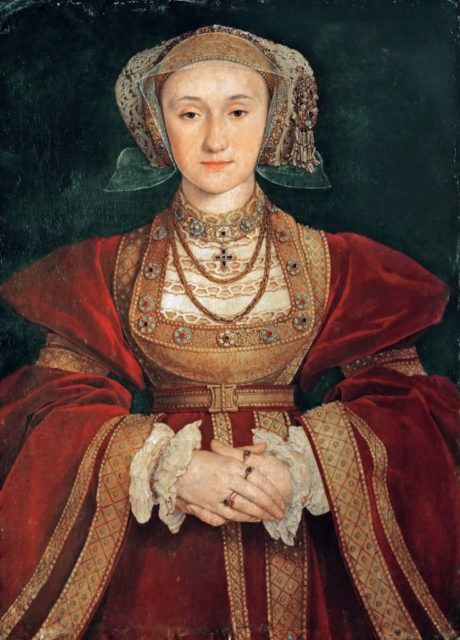
Moyle has identified other evidence supporting that this miniature portrait is Anne of Cleves. The unknown woman indeed seems to be wearing a piece of Jane Seymour’s jewelry, but Anne of Cleves was Henry VIII’s fourth wife while Catherine Howard was the fifth wife. If Henry VIII regifted jewelry to his wives, it could just as easily be Anne of Cleves wearing Jane Seymour’s pendant as Catherine Howard.
Similarly, Henry VIII married Catherine Howard when she was only a teenager. He married Anne of Cleves when she was in her mid-to-late twenties. Moyle observes that this miniature portrait “doesn’t look like a child bride.”
Moyle was also struck by the similarity between the woman in this miniature portrait and the painting done of Anne of Cleves in 1539. Holbein was first commissioned to paint Anne and her younger sister, Amalia, in 1539. Both sisters were being considered by Henry VIII to be his wife, to solidify a political alliance.
Moyle was struck by the similarities between the woman in the miniature portrait and Holbein’s 1539 portrait of Anne of Cleves, saying, “they’re the same woman. She has this soporific expression in both paintings.” Moyle theorizes that Anne of Cleves had Holbein repaint her shortly after her marriage because she wanted to be depicted in a different light that would be of more interest to Henry VIII. She said: “I think there’s a good reason why, in early 1540, she – or Thomas Cromwell, perhaps, who was very pro the marriage – might suggest Holbein paint her again so that, in the little miniature that Henry had in his pocket, he could see a version of Anne that was more appealing.”
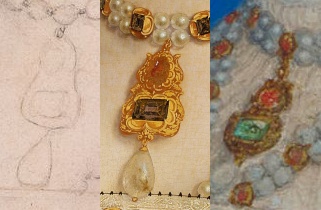
Anne of Cleves and Henry VIII were only married for six months. Henry VIII was disappointed in Anne as she was less attractive than he had imagined her to be, famously referring to her as the “ugly wife.” After their divorce, Anne remained in England where she was referred to as the “King’s Sister” until her death in July 1557. Perhaps this affectionate nickname means that Anne and Henry VIII remained friends for the rest of their lives.
Henry VIII then went on the marry Catherine Howard, who was one of Anne’s ladies-in-waiting. Catherine was only a teenager when she married Henry VIII, but Henry was captivated by her, referring to Catherine as his “rose without a thorn.” However, less than a year into the marriage, rumors of infidelity began to surface and Catherine was executed for adultery on February 13, 1542.
More from us: Henry VIII’s Most Brutal Executions
Part of the issue in identifying the woman in this miniature portrait is that there are no authentic portraits known to be Catherine Howard. After she was condemned for adultery, any portraits done of her would have been quickly disposed of. Thus, the identity of the woman in this miniature portrait remains a mystery, but it seems that we are slowly getting closer to the truth.
